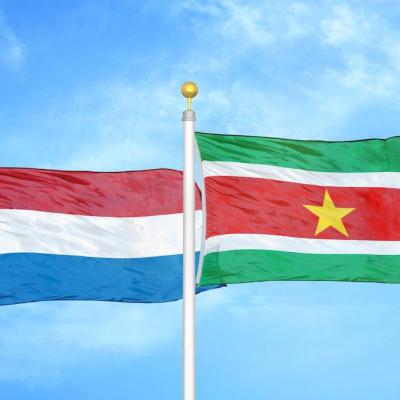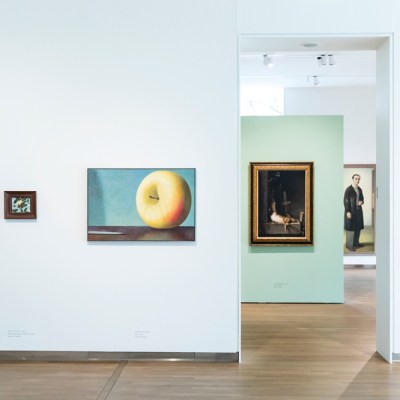From the June 2022 issue of Apollo. Preview and subscribe here.
Martine Gosselink joined the Mauritshuis as its new director in 2020, having made a name for herself as head of the History Department at the Rijksmuseum Amsterdam. There, she spearheaded major efforts in the museum’s research into the provenance of its colonial and post-war collections and initiated a number of headline-making exhibitions on controversial subjects such as the Netherlands’ involvement in the slave trade, the brutal war of independence in Indonesia and the long history of Dutch involvement in South Africa, which gave the world the word ‘apartheid’. Then, two weeks before she was due to begin in The Hague, the Netherlands went back into lockdown. Not an easy way to start.
Koen Kleijn: What was it like to start your new role during lockdown?
Martine Gosselink: It was pretty strange, as I’m sure most people have experienced. I am very much a person who wants to focus on the human aspect of an organisation. I want to get to know people, gain their trust, and that was not easy through my laptop screen. It was far from ideal.
KK: Particularly if you also have to be introduced to the wider circle around the museum – patrons, politicians, partners?
MG: That is only beginning to happen now. Of course, I talked to lots of people in that first year, but not to the extent I really wanted to. Only now do I get to go to openings, attend dinners, get invited to interesting debates, meetings, happenings, where I get to know all those other stakeholders, the neighbourhood policeman, the mayor.
The Hague is super interesting because of its international character. It stakes out a position as ‘the city of law and peace’, home of the International Court of Justice and the International Criminal Court, and of course it is the seat of the Netherlands’ government, with all those ambassadors and diplomats in tow. This makes it a brilliant place to work. The Mauritshuis itself couldn’t be located more strategically. It’s right next to the Binnenhof complex, which houses Parliament and it is literally 20 feet away from the Prime Minister’s private office. The Mauritshuis has been in that spot for nearly 400 years. It has seen thousands of dignitaries and politicians and crowned heads pass by its front door.
KK: To those in the know, the Mauritshuis is something of the ‘jewel in the crown’ of the Netherlands’ museums, which is a pretty rich bunch in itself. How do you see the museum’s current status?
MG: The Mauritshuis is unique by any standards. It is three things: the former royal collection, which was there to begin with; then the extraordinary acquisitions of my predecessors; and finally, a genuine 17th-century mansion, which has a wonderfully intimate atmosphere. I will say without any hesitation that we have the finest collection of 17th-century art in the Netherlands, per square metre.
KK: Per square metre?
MG: Yes, because we are in a relatively small building, with a small and compact collection. But everything we have is of ‘triple-A’ quality. There isn’t a single work of which you might think, ‘Mmm, does that really belong in a gallery?’ That is the great luxury of this collection.
KK: Being in an historic building must also have its drawbacks?
MG: Certainly. In our best ever year, 2019, Rembrandt’s 350th anniversary, we welcomed 480,000 visitors. The building can’t handle more than that. It’s a 17th-century structure, after all. But we’re not changing anything. We are very much attached to the authenticity of the place; it’s one of our great selling points. You won’t find us whitewashing any of our walls. But we also have a modern wing with an exhibition space, a brasserie, a shop and spaces for events and education and such.
Housed in a former 17th-century palace, the Mauritshuis sits alongside the Binnenhof complex on the banks of the Hofvijver in The Hague. Photo: Ivo Hoekstra
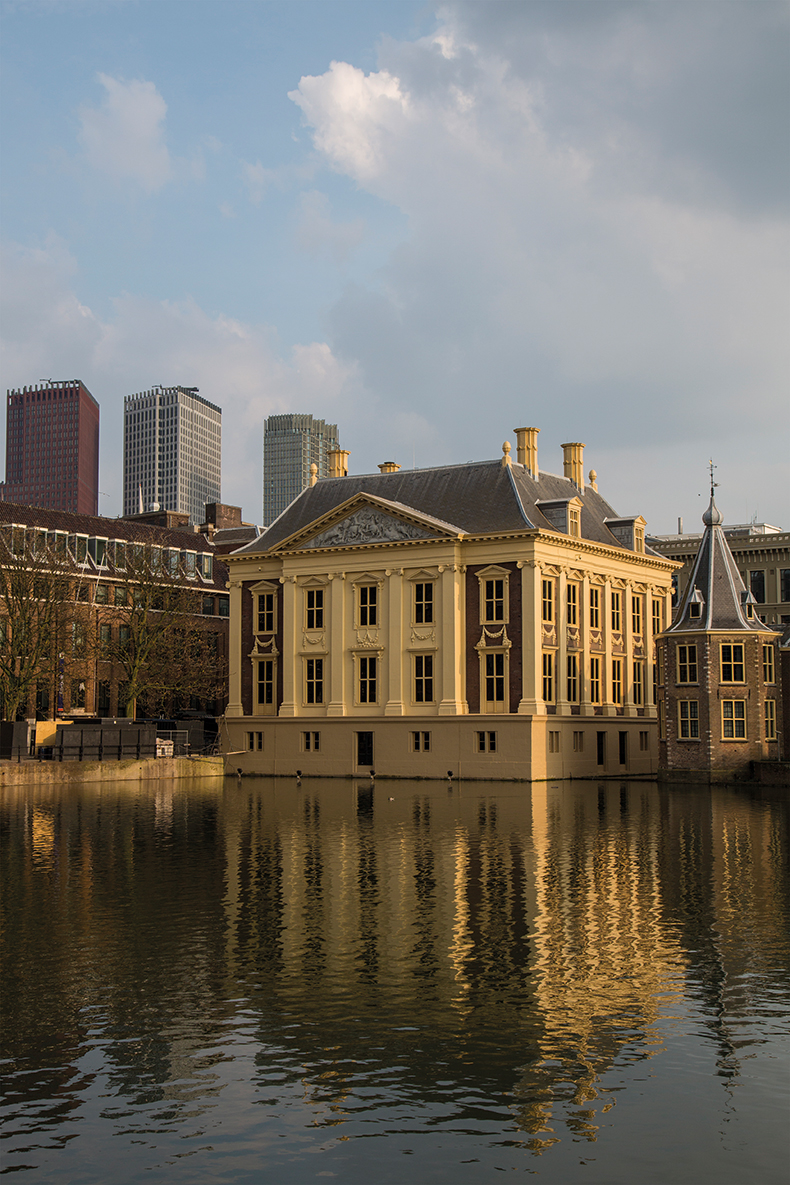
KK: Which other museums would you say the Mauritshuis compares to?
MG [without a moment’s pause]: Thyssen in Madrid. Louisiana in Denmark. Dulwich [Picture Gallery]. The Frick. All compact, almost homely collections, a family of ‘leading small museums of the world’. The power of our type of museum lies in someone being able to come in with plenty of energy and leaving with even more. There’s no chance of the kind of fatigue or disappointment you might feel after wandering through the Louvre for five hours. Studies show that visitors take in the most during the first 45 minutes. After that, it becomes work. You can spend four hours in our collection, but you could also spend just one hour and be absolutely satisfied.
KK: Does the compactness mean you also have fewer staff and fewer facilities?
MG: Actually, it’s not bad at all. We have four curators for a collection of 850 works, so that really is quite chic. I wouldn’t want the organisation to get any bigger, because of that focus on the human aspect. We have 70 people on staff, 150 volunteers and 35 teachers and guides, and I know them all. I love that way of working together. It’s all very direct. We make plans, we sit down, we discuss them and then we decide.
KK: What were your plans for this museum when you first arrived?
MG: The most important thing to me – something I had experienced already when I first visited, as a student – was the lack of context. Who was this Johan Maurits of Nassau? Why is the Mauritshuis named after him? Where does the collection come from? Maurits commissioned this building in the 1630s, but why here, next to the Binnenhof? I felt that was missing almost entirely. We have now devoted an entire room to him, telling the public who he was, what his connection to the house was, how he is related to the collection.
KK: And you explain how he was involved in the slave trade?
MG: Obviously. Johan Maurits of Nassau was one of the great instigators of the Netherlands’ involvement. Working for the West India Company, he seized the two greatest slave depots on the African west coast, Luanda and Elmina, and then became governor of the Dutch territories in Brazil. Those are significant events in our history and few people know that.
The museum devoted an exhibition to him in 2019. Four dozen historians and writers produced a book about his exploits in Brazil, but after that we began a project with university researchers from Spain, France, Portugal, Brazil and the Netherlands to go even deeper into the archives. This has already produced a wealth of new information.
KK: You were involved in similar projects at the Rijksmuseum, Amsterdam.
MG: Indeed, starting in 2015 with investigating the terminology we used in our day-to-day museum practice. This found its way to the press by accident. Within a few weeks, 40 international papers and magazines reported that the Rijksmuseum was going to skip the words ‘eskimo’ and ‘negro’. And there I was, thinking we were late starters. As it turned out, we were quite ahead of the curve. We also charted the disputed provenance of parts of the collection – acquired through confiscation or theft during the Second World War – and we tackled some difficult subjects in our exhibitions.
View of Delft (c. 1660-61), Johannes Vermeer. Mauritshuis, The Hague
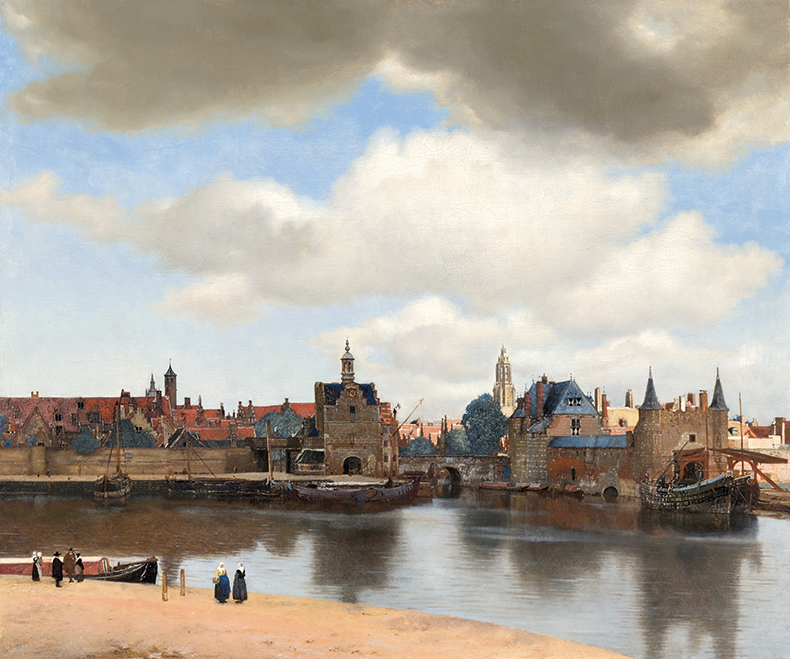
KK: Those were your shows on slavery and the war of independence in Indonesia. In the Mauritshuis, you’re less likely to address things like that, on a national platform?
MG: This is first and foremost a museum for the arts. But the history of the building is so interesting and so vital to the history of this country, that we are obliged to address it, simply by virtue of who we are and where we are. We are now also investigating the role of the Mauritshuis during the Second World War. The Germans occupied the Binnenhof, which became a stronghold of the Nazi administration – it’s uncanny just to think about that now.
We will do something about stolen objects, focusing on three aspects: the Second World War, the colonial period and looting during the Napoleonic wars. That last aspect is quite fascinating. In 1795, French troops made off with 200 works from the collection of the former Stadtholder. Two thirds of that loot was duly returned – Paulus Potter’s The Bull (1647) being the most prominent among them – but there’s still quite a bit left there, in the Louvre.
KK: Will you be petitioning the French government to return the items?
MG [smiling]: That might happen, although it seems largely theoretical.
KK: Do you think this focus on the history of the Mauritshuis detracts from the experience of seeing the paintings?
MG [firmly]: No. And why should it? You can come here and see Rembrandt’s The Anatomy Lesson of Dr Nicolaes Tulp (1632) without being affected by the history of it all. People sometimes ask me: ‘Now that I know what Johan Maurits did, is it still OK to enjoy the pictures?’ Of course it is. Entirely up to you. We are happy to show them to you.
KK: But you will add new background information to the galleries?
MG: Yes, because there were no captions or texts whatsoever when I first got here. I just couldn’t understand it. We do have a great audio tour but many people don’t like having such a thing on their heads. Even highly educated and well-read people these days simply don’t know their Bible or their classics, so a fairly large percentage of our visitors wandered through the collection puzzled, not really understanding what they saw.
A display of early works by Rembrandt at the Mauritshuis; in the centre is The Anatomy Lesson of Dr Nicolaes Tulp (1632)
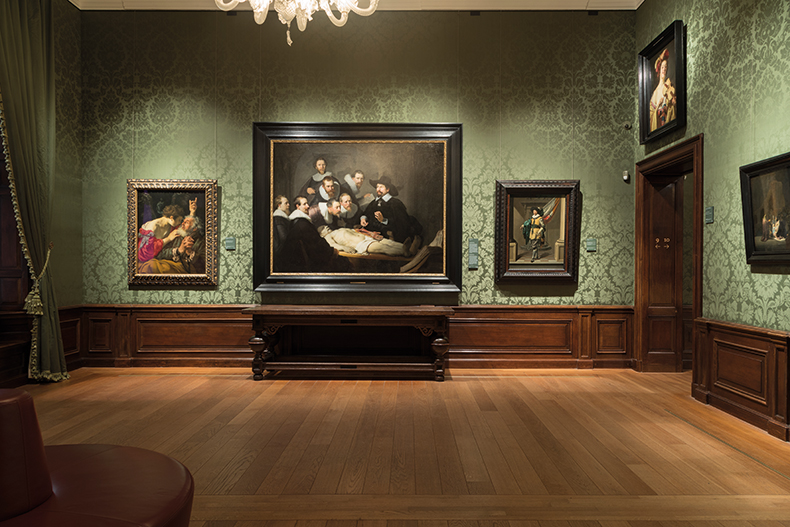
KK: What are your plans for the Mauritshuis’s bicentenary celebrations?
MG: First we’re devoting attention to our extraordinary history. King William I created his personal museum in 1816, then acquired the Mauritshuis – up until then it had been the official hotel for guests of the government – which in 1822 opened its doors to the public as the Royal Cabinet of Paintings and Rarities. According to the announcements in the press at the time, the museum could be visited by ‘anyone who is well dressed, and has no children in his company’. Since then, the collection has grown in strength and quality. For instance, William I bought Vermeer’s View of Delft (c. 1660–61) in 1822. That showed considerable vision. Vermeer was not well known at all by that time, still waiting to be discovered. The acquisitions after that were truly marvellous: Fabritius’s The Goldfinch (1654) in 1896, Vermeer’s Girl with a Pearl Earring (1665) in 1902 and so forth.
We’re also celebrating how, from the very beginning, the collection was a source of inspiration to people like Marcel Proust and Vincent Van Gogh and a host of other writers, photographers, dancers. We’ve asked a group of photographers to look back over those 200 years and choose a painting that really speaks to them to make a new work, which we’ll call Flash/Back. Among them are Rineke Dijkstra, Anton Corbijn and Erwin Olaf – quite the major league of Dutch contemporary photography.
Throughout the city of The Hague we’re producing five very large murals by Dutch artists. There are still so many people in this city who may or may not have heard of us. When they see The Goldfinch or The Bull on the walls of their neighbourhood, they might consider paying us a visit. And we’ve published a book, called Pen meets Paint, which features contributions about the collection from the likes of Margaret Atwood, Hilary Mantel, Simon Schama and Donna Tartt. We have pieces from 200 writers in total.
KK: And then, finally, there’s the Frick.
MG: Yes. The icing on the cake. A loan of ten major paintings, which will travel only to the Mauritshuis. Rembrandt’s Self Portrait (1658) is the key work; I am not ready to divulge what the other nine will be. It is truly a once-in-a-lifetime thing.
The Frick never lends from its collection, but as they are renovating the building there was a loophole. The connections between the Mauritshuis and the museum are very good, thanks to Emily Gordenker, my predecessor. In 2013 the Mauritshuis lent 15 works to the Frick, including Girl with a Pearl Earring, which made the exhibition their most-visited ever.
KK: Your own exhibition space is fairly small. How does that influence your exhibition programming?
MG: Well, it allows us to show only the very best. And we can do that because we can usually borrow really excellent works. We have something to offer in exchange, of course – our international contacts are excellent. So we like to focus on making exquisite small shows. We’ve shown paintings from the Royal Collection in London, highlights from the National Trust, things like that. And size is not that important. We are always in close cooperation with other institutions in the Netherlands. This is a small country, after all – cooperation is essential. As with the great Vermeer exhibition in the Rijksmuseum, which opens next year, to me it was a no-brainer that all three of our Vermeers are going to be a part of that, including Girl with a Pearl Earring. It would be bizarre for people to travel from Japan or New York for the once-in-a-lifetime chance to see all those Vermeers together, and then to find that our three are missing.
KK: But Girl with a Pearl Earring must play a big part in your own museum’s profile?
MG: We’re getting her back early, after eight weeks, when our ‘tulip season’ starts – the most important time of the year for us. We’re building our own campaign around the fact that she’ll be away for eight weeks, so everybody will be aware of that, and of the fact that it’s the Mauritshuis where she is really at home.
From the June 2022 issue of Apollo. Preview and subscribe here.

